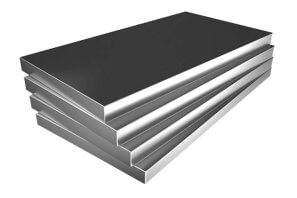Alloy steel plates are a crucial component in various industrial sectors, playing a pivotal role in the construction, manufacturing, and engineering fields. Comprising a blend of different elements, alloy steel plates exhibit superior mechanical properties compared to traditional carbon steel plates. In this article, we will delve into the composition, properties, and applications of alloy steel plates, shedding light on their significance in diverse industries.

Composition of Alloy Steel Plates: Alloy steel plates are primarily composed of iron as the base metal, with the addition of various alloying elements to enhance specific properties. Common alloying elements include chromium, nickel, molybdenum, vanadium, and manganese, among others. The combination of these elements results in unique material characteristics, making alloy steel plates suitable for a wide range of applications.
Properties of Alloy Steel Plates:
- Strength and Durability: Alloy steel plates are renowned for their exceptional strength and durability. The presence of alloying elements strengthens the material, allowing it to withstand high-pressure conditions, heavy loads, and harsh environments.
- Hardness and Wear Resistance: Alloying elements like chromium contribute to increased hardness and wear resistance in alloy steel plates. This makes them suitable for applications where resistance to abrasion and wear is critical, such as in mining equipment and machinery.
- Corrosion Resistance: Certain alloying elements, notably chromium and nickel, impart corrosion resistance to alloy steel plates. This property is particularly beneficial in industries where exposure to corrosive environments is common, such as chemical processing and offshore oil and gas exploration.
- Temperature Resistance: Alloy steel plates can exhibit excellent performance at both high and low temperatures. This versatility makes them suitable for applications in extreme temperature conditions, such as in aerospace and power generation.
Applications of Alloy Steel Plates:
- Construction and Infrastructure: Alloy steel plates find extensive use in the construction of bridges, buildings, and other infrastructure projects. Their high strength and durability make them ideal for supporting heavy loads and withstanding environmental stresses.
- Oil and Gas Industry: Alloy steel plates are indispensable in the oil and gas sector, where they are used for the construction of pipelines, pressure vessels, and drilling equipment. Their corrosion resistance ensures longevity in harsh offshore environments.
- Automotive and Aerospace: In the automotive and aerospace industries, alloy steel plates are utilized in the manufacturing of components that require a combination of strength, toughness, and weight efficiency. These include engine parts, chassis components, and aircraft structures.
- Mining and Heavy Machinery: Alloy steel plates are commonly employed in the mining industry for the fabrication of heavy machinery components. Their hardness and wear resistance make them well-suited for withstanding the abrasive conditions encountered in mining operations.
Conclusion: Alloy steel plates are a cornerstone in modern industry, providing the strength, durability, and versatility required for a multitude of applications. As technology continues to advance, the demand for innovative materials with enhanced properties will likely drive further developments in alloy steel plate manufacturing, ensuring their continued importance in various industrial sectors.








